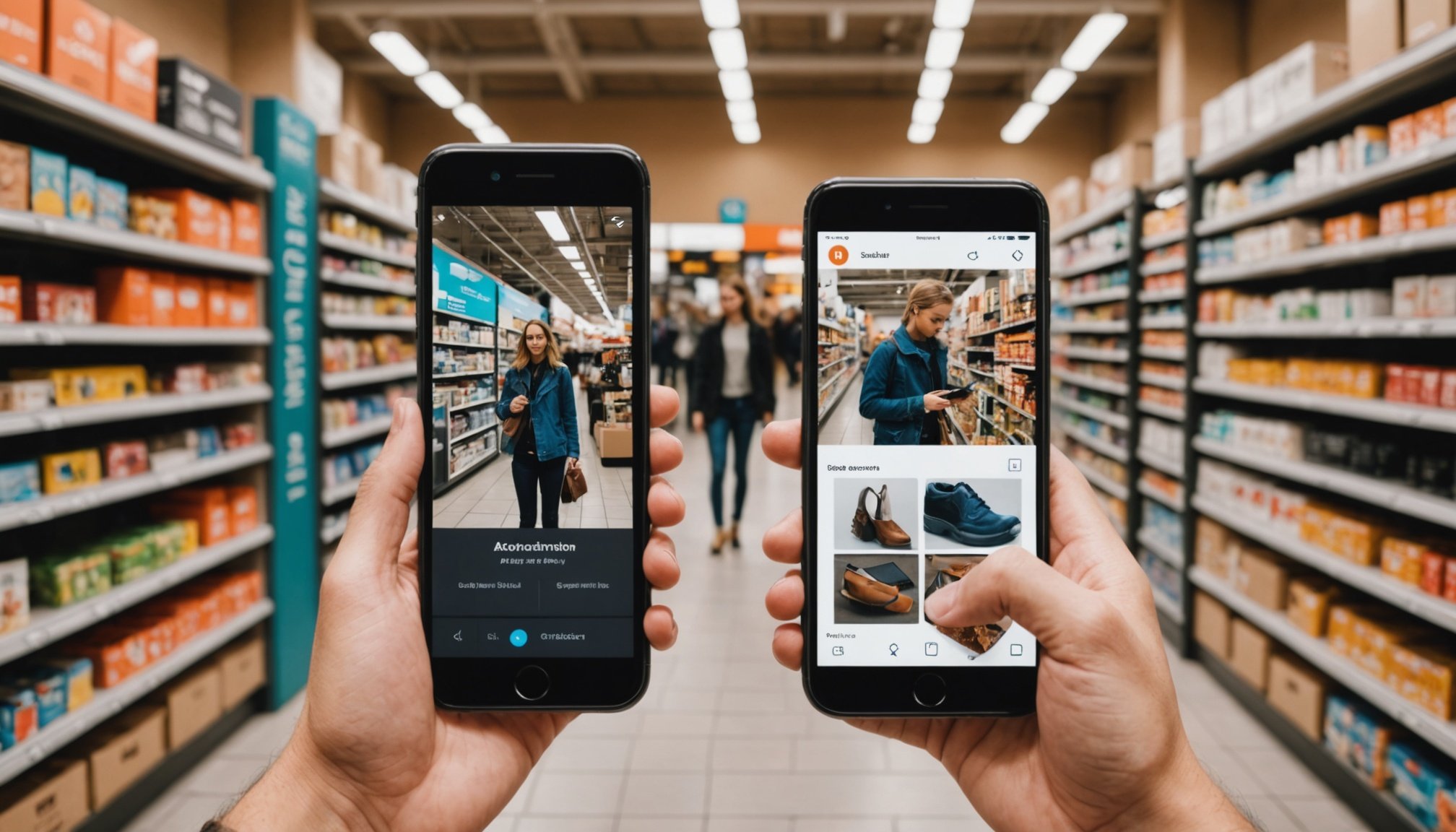Understanding Augmented Reality in Retail
Augmented reality (AR) is a transformative tool in the retail industry, overlaying digital information in the physical shopping environment. Incorporating AR technology benefits allows retailers to offer enhanced consumer interactions, making shopping more engaging and personalised. By integrating virtual experiences with real-world settings, retailers can significantly improve the consumer experience enhancement.
The core advantage of AR in retail is its ability to provide interactive and immersive shopping experiences. Shoppers can visualise products virtually in their homes before purchasing, reducing uncertainty and increasing confidence in buying decisions. For instance, trying on clothes without stepping into a fitting room or envisioning how a piece of furniture fits into a living room truly embodies convenience.
Also to discover : Maximizing fundraising success: creative virtual event tactics for uk charities
Current trends indicate a growing adoption of AR among retailers, driving innovative strategies. Many brands are utilising AR for virtual try-ons, gamification of shopping, and personalised product recommendations. These trends demonstrate AR’s potential to blend the physical and digital realms seamlessly, ensuring an enjoyable journey for consumers.
Despite technological complexities, the AR trend is accelerating as more businesses realise its potential to capture and retain customer interest. With the continuous evolution of AR, the possibilities for retailers to refine the shopping experience are boundless, promising a brighter future in consumer engagement and satisfaction.
Also to discover : Mastering month-end close: essential best practices unveiled
Case Studies of UK Retailers Leveraging Augmented Reality
Exploring the impact of augmented reality (AR) on UK retailers reveals transformative effects. The following case studies depict successful AR implementations across various retail segments.
Example 1: Major UK Retailer
A leading UK retailer has embraced AR to enhance customer experiences both online and in-store. By allowing users to virtually try on products or visualise items in their homes, the retailer reported a significant boost in consumer engagement metrics. Positive consumer feedback indicated that the convenience and immersive nature of AR increased satisfaction and loyalty. Consequently, the initiative drove sales up and helped cultivate stronger relationships with customers.
Example 2: Innovative Start-Up
This start-up leveraged advanced AR technology to offer unique, interactive shopping experiences. Consumers could interact with digital models of products, gaining insights before making purchases. Results showed improved customer interaction outcomes, with users spending more time engaging with products through AR. The key lesson learned was the importance of seamless integration, ensuring that AR should not disrupt the natural flow of shopping but rather enhance it.
Example 3: Multi-Channel Retailer
By integrating AR across multiple platforms, this retailer enhanced its omnichannel shopping experience. Customers benefited from consistent, personalised interactions, regardless of the platform used. Key performance indicators (KPIs) highlighted a substantial uplift in customer satisfaction and conversion rates, validating the retailer’s investment in AR technology. This case underscores the potential for AR to harmonise the shopping journey across diverse channels.
Actionable Strategies for Implementing AR in Retail
Implementing Augmented Reality (AR) in retail requires using practical strategies and innovative retail technology tactics. The first step is to assess your business’s readiness for AR integration by analysing your current technology infrastructure, evaluating your customer engagement levels, and determining the resources needed for successful adoption. It is essential to have a clear understanding of how AR can enhance customer engagement and align with your business goals.
To effectively implement AR, consider employing advanced tools and technologies. Companies should explore software development kits (SDKs) that offer comprehensive features and support for building AR applications. Additionally, choose hardware compatible with AR technology, such as smart glasses or updated smartphones, ensuring seamless user experiences.
Maintaining a high-quality user experience during AR sessions is crucial. Follow best practices like testing prototypes with real users to gather feedback and identify areas for improvement. It’s equally important to keep interfaces intuitive and easy-to-navigate, avoiding unnecessary complexity. Regular updates and maintenance of AR applications ensure they remain functional and engaging.
By focusing on these strategies and leveraging relevant technologies, retailers can successfully integrate AR, providing more interactive and engaging experiences for their customers.
Consumer Behavior Insights Related to AR Shopping
Understanding consumer behavior in the context of augmented reality (AR) shopping is pivotal for brands aiming to leverage this technology. Research into consumer behavior AR reveals distinct trends in how shoppers engage with AR tools.
Analysis of Consumer Attitudes
Studies indicate that shoppers are increasingly open to experimenting with AR technologies. This openness is driven by the desire for immersive and interactive shopping experiences. An essential insight is that AR technology offers a preview-like feature, allowing consumers to visualize products within their own environment before purchase. This visualization results in a higher level of engagement and shopping preferences leaning towards brands that offer such experiences.
Influence on Purchasing Decisions
Research underscores a significant shift in purchasing decisions due to AR engagement. Consumers reportedly have greater confidence in their buying decisions when they can interact with products via AR. This leads to reduced return rates, as shoppers feel more assured that the products meet their expectations.
Segmentation of Receptive Consumers
Not all consumers are equally inclined towards AR shopping. The most receptive demographics often include tech-savvy millennials and Gen Z who seek innovative shopping methods. Understanding these segments allows for tailored strategies to enhance AR engagement insights, ensuring that the deployment of AR meets the right audience’s preferences effectively.
Challenges and Solutions for AR Adoption in Retail
Adopting AR technology in retail comes with its own set of challenges. One major issue is the technological know-how required to implement these systems smoothly. Retailers often face difficulties due to insufficient infrastructure and lack of expertise, which can impede AR integration. Furthermore, overcoming obstacles such as device compatibility and customer resistance to new technologies presents additional hurdles.
To tackle these AR challenges in retail, retailers must prioritise strategic planning and investment. This includes upgrading existing infrastructure to support seamless technology adoption solutions. Providing comprehensive training for staff ensures they are well-equipped to manage new AR tools. Additionally, enhancing device compatibility by collaborating with technology providers can mitigate issues related to system integration.
Retailers can further encourage AR adoption by engaging customers through interactive demonstrations that highlight the practical benefits of AR applications. By clearly showcasing how AR technology enhances the shopping experience and offering incentives for using AR features, resistance can be reduced.
Looking ahead, retailers exploring AR applications should consider long-term trends and potential technological advancements. Staying informed about industry innovations will allow companies to remain competitive and adapt quickly to changing consumer expectations. This proactive approach ensures sustained success and maximises the benefits of integrating AR technology into retail environments.











